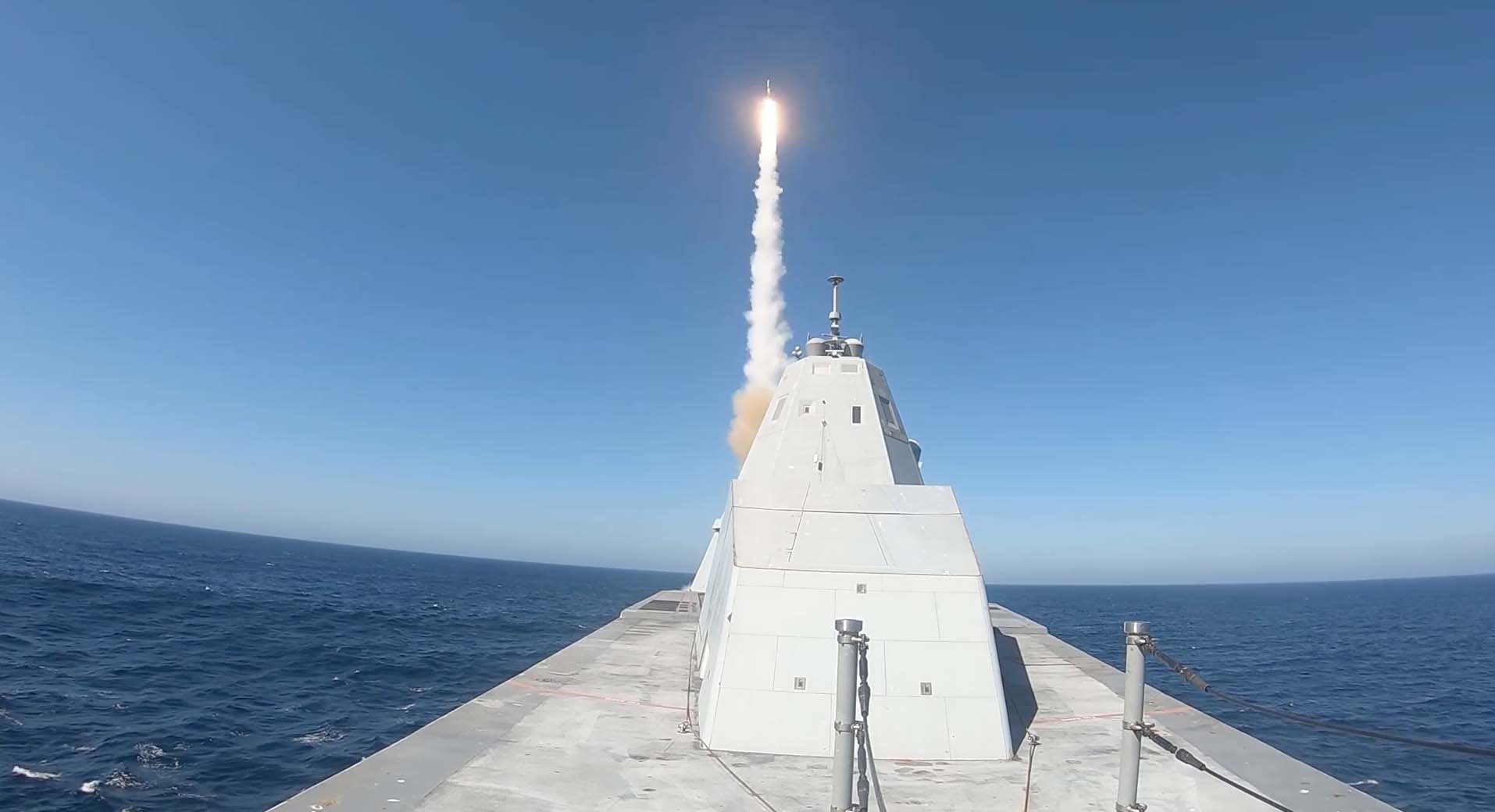News
Successful Intercept Test Sets Strong Course for Navy’s Zumwalt
Engineers from the Johns Hopkins Applied Physics Laboratory (APL), U.S. Navy sailors and industry partners watched years of work pay off when the USS Zumwalt (DDG 1000) successfully executed the first live-fire test of the Mark 57 Vertical Launching System with a Standard Missile-2 (SM‑2) at Naval Air Warfare Center Weapons Division Sea Test Range, Point Mugu, in early October.
The Zumwalt-class destroyer demonstrated its capability to detect, track and engage an anti-ship cruise missile threat with an SM-2. The test assessed the ship’s ability to handle the weapon firing’s shock and vibration and also measured any hazards or degradations resulting from firing live ordnance.
“Much like Adm. Elmo Zumwalt, for whom this class is named, these ships will change the way the Navy operates, and this first intercept establishes that the Zumwalt anti-air warfare [AAW] capabilities are imminent,” said Linda Kress-McDonald, the Zumwalt combat systems chief engineer in APL’s Air and Missile Defense Sector. “This successful intercept is the result of the national team’s perseverance and dedication to this platform in an environment of often changing requirements and fleet priorities.
“Belief in the importance of this ship class has driven this success,” she continued. “With the breadth of experience APL brings across all areas of the AAW fire control loop, we were instrumental in reaching this long-awaited milestone.”
Kress-McDonald has worked on this program since 2013, and said the challenge to reach this milestone — one she called “one of the most ambitious things the Navy has ever done” — was worth the time and energy expended. As the Navy’s needs changed, and the world dealt with the constrictions of COVID-19, the team adjusted to ensure timely delivery.
“A key reason for APL’s continued success in these areas is our ability to take lessons learned from previous efforts and leverage them toward future efforts,” said Patrick Yu, who manages APL’s Integrated Self-Defense Combat Systems program.
APL is currently the technical advisor for the Zumwalt Integrated Combat System program.
“As the technical advisor for several Navy programs, APL has the unique capability and systems engineering expertise to bring it all together,” Yu said. “Our significant history and experience with the Navy across multiple combat system programs gives us the ability to excel when it comes to tackling complex system integration challenges. As the Navy continues to define a future centered on a new operational concept known as Distributed Maritime Operations, the Zumwalt-class destroyers will play a key role.”
APL contributions included verification of performance requirements for the SM-2 communication link, or Joint Universal Weapons Link, which significantly improved the missile’s performance through hardware and software upgrades.
“The APL missile team has been involved in every aspect of the developmental life cycle of this weapon for this platform, from the development of performance requirements to evaluation of the design,” said Chris Goodwin, who manages APL’s SM-2 program. “APL is also the only facility capable of evaluating the combined hardware and software in a closed-loop fashion.”
The Zumwalt class is also a key enabler in accelerating new warfighting capabilities and the rapid development and validation of operational tactics, techniques and procedures.
“[October’s] successful test not only demonstrates the ship’s capability to fire missiles and conduct self-defense, but it is also a significant step toward more advanced combat system testing and operations for our Navy’s most technically innovative warship,” said Capt. Matt Schroeder, DDG 1000 program manager in the Navy’s Program Executive Office Ships. “The USS Zumwalt crew and Surface Development Squadron One are working hand in hand with the acquisition community to advance this ship’s operational capability.”
In 2020, installation and activation of the ship’s combat system reached the point where the Navy approved final delivery and transition to the next phase of developmental and integrated at-sea testing.
“The successful firing event is a critical milestone in the maturation of this incredible ship class and represents the culmination of a tremendous amount of hard work and partnership of Zumwalt’s talented crew and the engineers, designers and programmers helping us to bring her capabilities to the Fleet,” said Capt. Gary Cave, USS Zumwalt’s commanding officer. “It is a day we’ve been looking forward to, and this achievement demonstrates the strides we are taking to add combat capability to our surface force.”
The Zumwalt will continue tactical training and operational scenario engagement to attain initial operational capability this year.
